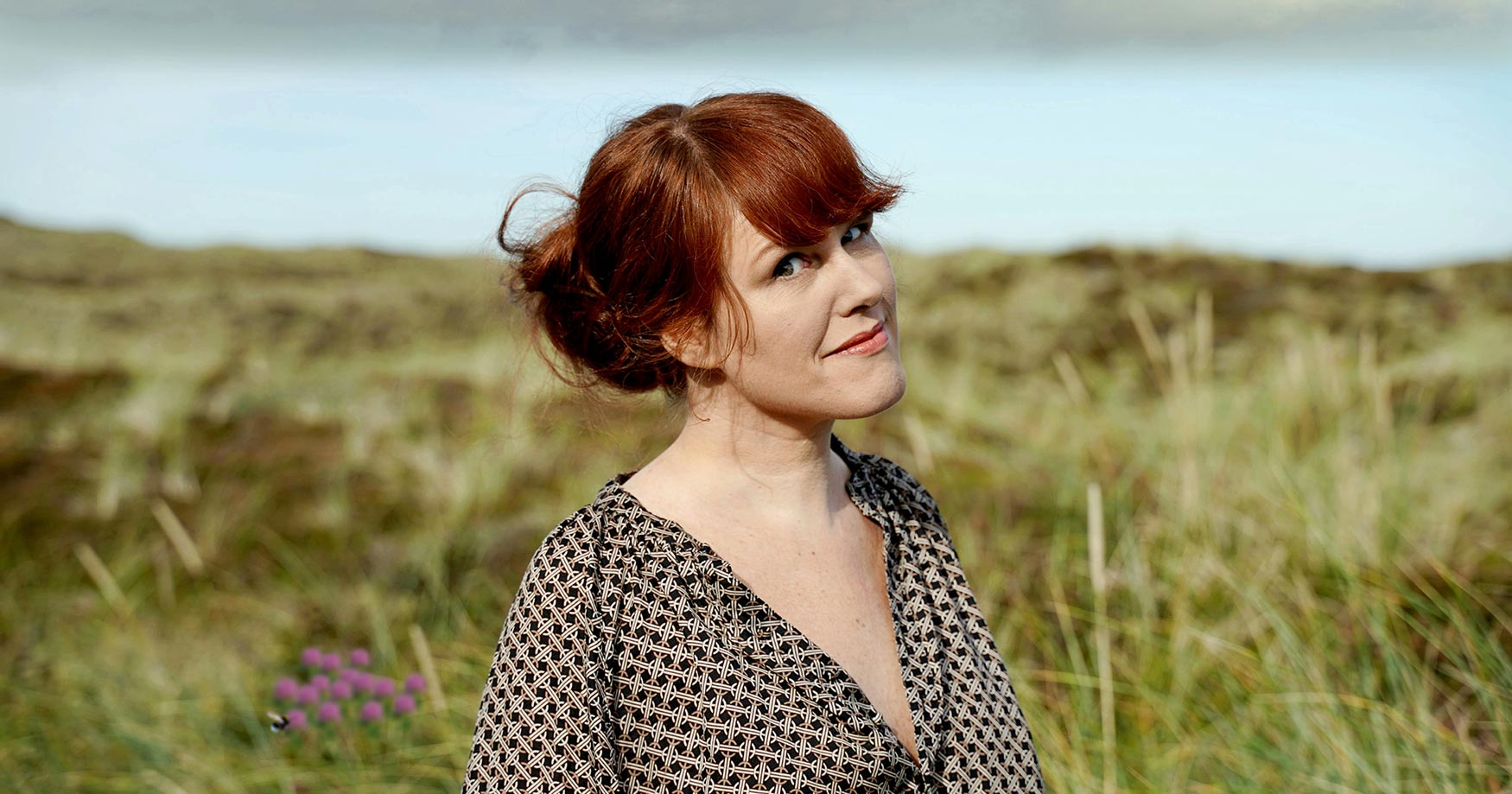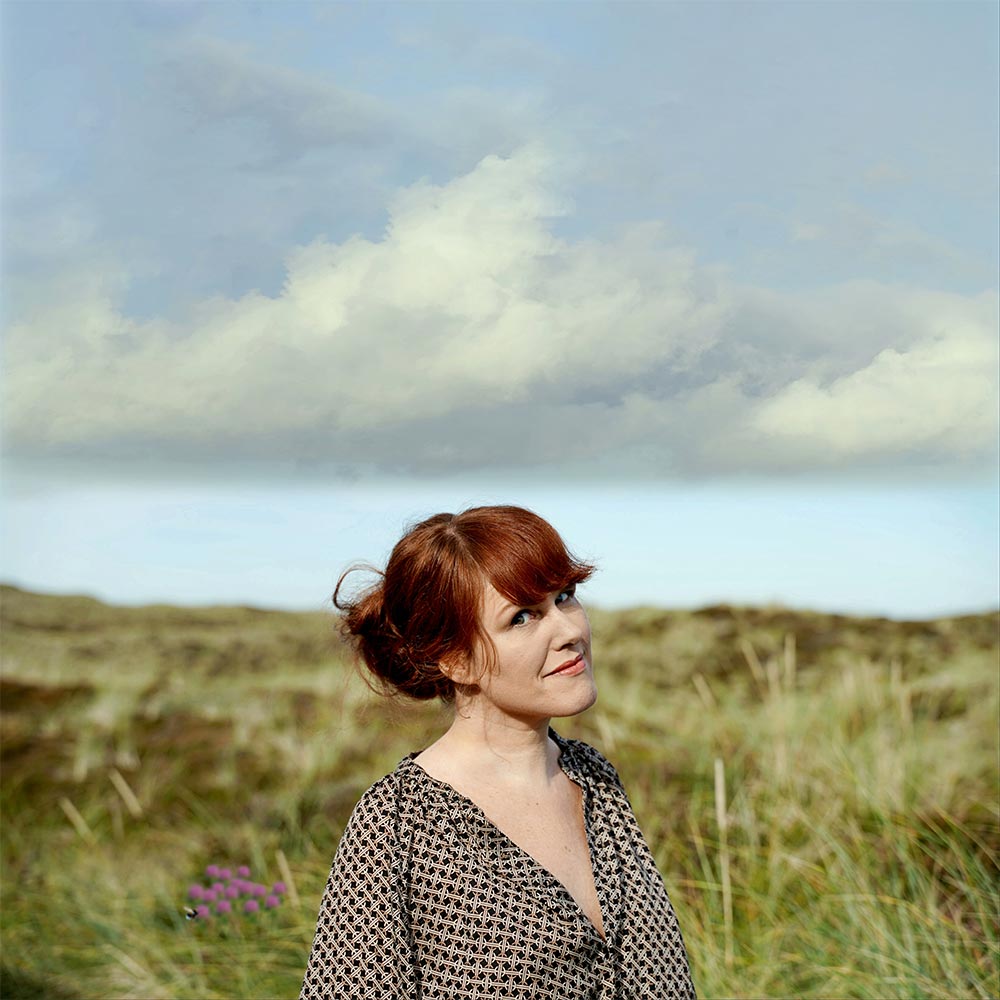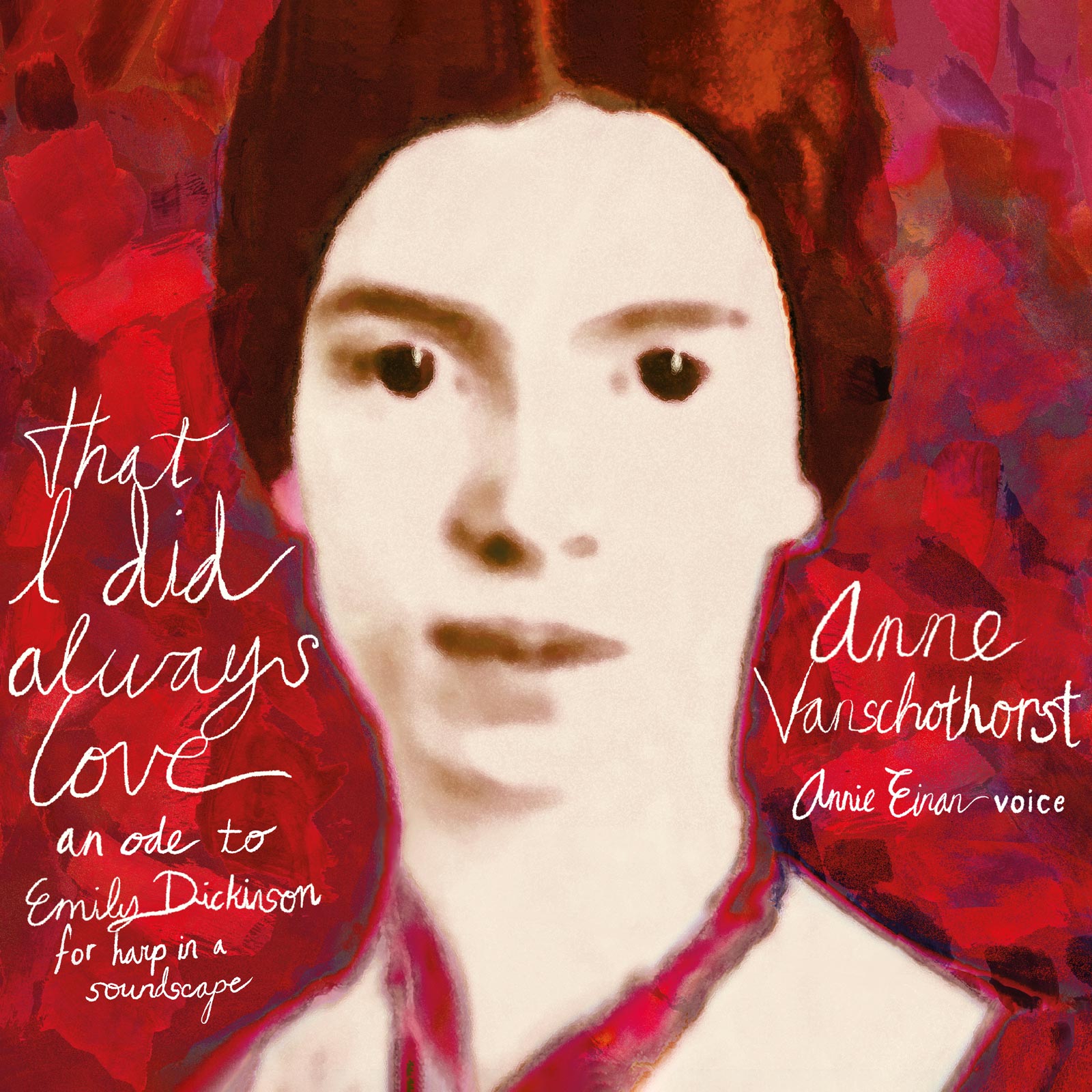
Composer and Harpist Anne Vanschothorst’s music has been described as innovative, minimal, lyrical, cinematic, and touching yet intense. The same rings true in THAT I DID ALWAYS LOVE, the artist’s musical ode to the great American poet Emily Dickinson. Featuring seven of the poet’s works set to music, Vanschothorst fosters an intimate listening space where two art forms reach a soothing synthesis, amplifying the elegance of Dickinson’s texts with the graceful nature of the harp, a perfect pairing.
Today, Anne is our featured artist in “The Inside Story,” a blog series exploring the inner workings and personalities of our composers and performers. Read on for a look at her intentions with this Big Round Records release and a few famous quotes that resonate with her the most…
What have been your biggest inspirations on your musical journey?
Remarkable people — teachers from then and now, heartfelt music and (outspoken) poetry, visual art, awesome nature, and daily (seemingly innocent) imprints are my main inspiration to compose music. I translate everything that impresses me, but cannot yet be expressed through words, into a harp poem.
With the sounds of nature, from singing birds in my garden to a rumbling lava and singing ice, I intend to tell a harp story by giving a voice to the rumbling earth in my “harp note to Emily Dickinson.” Next to Dickinson’s poetry and voice, I wanted to talk about the things that matter in the world we live in these days. It’s still a place of beauty and awe but we need to be aware and take care. I also wanted to give voice to the courageous women of Iran because their important message should be heard!
What advice would you give to your younger self if given the chance?
Do not compare yourself to others. Music is everywhere and there is plenty available for everyone.
“My idea is that there is music in the air, music all around us; the world is full of it, and you simply take as much as you require.” – Edward Elgar
Listen to your own truth. Take your good feeling thoughts as guidance to continue your sound-search and be brave, playful and curious during this amazing adventure! Enjoy!
What emotions do you hope listeners will experience after hearing your work, THAT I DID ALWAYS LOVE, an ode to Emily Dickinson?
Even though the listening experience to spoken word poetry might be solitary, there is a communal aspect to it. I hope the listener will feel close to the poet and the harpist. Even without understanding the foreign tongue or powerful diction merged with a soulful vocal timbre is felt very deeply, the sound of the voice (music) is what matters to appreciate spoken word.
How have your influences changed as you grow as a musician?
My 47 strings used to be enough to create and to do the talking. Now I engage with those who act in the arts as a journalist, a truth seeker, or an activist poet. Still, I need to escape into my harp and soul to have impact, to be creative, to make music and love, and to share beauty and consolation in the world.
Where and when are you at your most creative?
“When I am silent, I fall into the place where everything is music.” — Rumi
What are your other passions besides music?
I feel passionate about the HARPlab, a transdisciplinary [art] space for exploration, a new conceptual dimension and platform beyond (live) performance and (offline) experience. The aim is to shape reality — that may lead to transformation, by creating [experimental] art-fusion projects in various settings, [from online, app, event, rtv and “in a room,” to the (multimedia) production itself], with the focus on alignment, inspired action, imagination, sound, and silence. I guess everything I love to do is somehow harp related.
There is a fantastic opportunity for artists to use [visual] language to make a stand. Visuals that have symbolism, context, and connotation could send a strong message. The words, the narrative one chooses are the temperature of the social climate and very much the influence of one’s life experience and well-being. The tone of voice is clearly essential, therefore artists should take the lead to make waves and create a movement that attracts so many other voices that change is inevitable — a butterfly effect — in a contemporary landscape; art that turns out to be an universal expression of the human longing for the beauty of peace.

Anne Vanschothorst (The Netherlands) is a landscape music composer, minimal harp pioneer, and multimedia artist exploring creativity in applied music, film, and spoken word — using overdub and making sound sculptures with 47 strings. She received international critical acclaim as an indie composer and producer who records sound on sound stilled mystical landscape music for in-a-room, film, multimedia, and spoken word. This new poetic and inventive, edgy sonic universe next to the existing harp planet and music world, indicates that Vanschothorst walks off the beaten track. The written note-scores are frequently performed by international musicians and added to their repertoire. The “You Play I listen!” platform is an ongoing creativity project that was initiated to share Harp and Soul Music performed by others via videos and sound-clouds.

